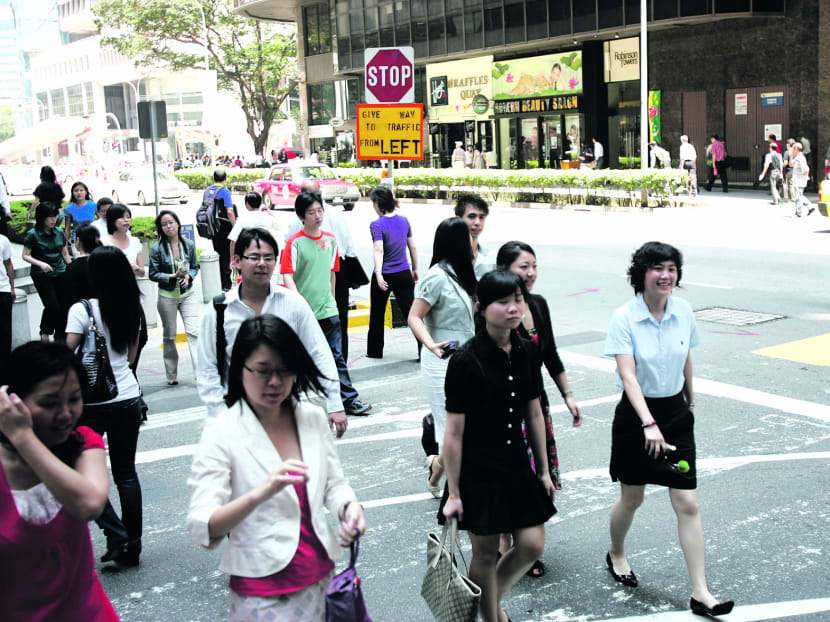Resident wages up as efforts to stem foreign labour kick in
SINGAPORE — Wages for resident employees grew at a much faster pace in the first half of this year, as businesses paid more to hire locals in a tight labour market caused in part by efforts to stem the flow of foreign workers.

Some form of comparison is healthy, but we must know our satisfaction limits. TODAY file photo
SINGAPORE — Wages for resident employees grew at a much faster pace in the first half of this year, as businesses paid more to hire locals in a tight labour market caused in part by efforts to stem the flow of foreign workers.
The contribution of resident workers to employment growth has also improved, with locals making up more than half of the total in the first six months, the Monetary Authority of Singapore (MAS) said yesterday in its bi-annual macroeconomic review.
“Overall, resident wage growth accelerated to 4.5 per cent on-year in the first half of 2013, up from 2.3 per cent in the whole year of 2012,” the central bank said. “This was largely consistent with the resident unemployment rate, which remained low at around 3 per cent in the first half of 2013.”
In all, 62,600 employees were added to the workforce in the first six months, compared with 58,900 in the same period last year. Resident workers made up 55 per cent of the overall job gains in the first half, up from 45 per cent last year and 31 per cent in 2011.
“The contribution of foreign workers to total employment growth slowed in (the first half), as foreign labour policies became more binding,” the MAS said, adding that the number of work permit holders rose by 18,500 in the first half of the year, compared with 43,500 for the whole of 2012.
Economists TODAY spoke to say the rapid rise in wages is not surprising given the tight labour market, but that the increase is not entirely good news.
“Higher wages will stimulate consumption, which will in turn support economic growth as businesses enjoy higher revenue,” UOB economist Francis Tan said. “But everything has a flip side. Business costs will certainly go up. But more worrying is the fact that the wage growth is not even across all sectors — that may worsen income inequality.”
MAS data shows that wages for local employees in industries such as community, social and personal services, real estate services and professional services grew the fastest in the first half of the year. However, resident wages for construction, manufacturing and food services grew less than in the second half of last year.
Meanwhile, higher business costs rising from rapid wage growth will also hurt the business sector.
“Obviously, there will be some companies that won’t be able to cope — there will be casualties as Singapore restructures its economy,” CIMB economist Song Seng Wun said. “But because people in Singapore and around the region still have the means to consume the more expensive goods and services, the overall impact should be manageable.”
The MAS expects the core inflation rate, which strips out the cost of accommodation and private road transport, to increase from between 1.5 and 2 per cent this year to between 2 and 3 per cent next year.
“Rising COE premiums for commercial vehicles and elevated levels of business rentals could exacerbate business costs. As these accumulate and as sentiment improves in tandem with the turnaround inactivity, the pace at which firms pass on costs to consumer prices should intensify,” it said. Wong Wei Han





